Although a great deal has been written and published on the modern history of Palestine, the ancient history of the land suffers from three major difficulties: first, the existence of many gaps and ambiguities as a result of the scarcity of historical documents; second, the dominance of the biblical narrative, which conveys the history of ancient Israel as the officially sanctioned version of history; and third, the prevalence of unscientific and simplistic popular myths and legends in an attempt to provide a response to the biblical narrative. Nur Masalha’s magnum opus ‘Palestine: A Four Thousand Year History’ (Zed Books Ltd., 2018) is a masterly response to these difficulties.
What follows is a very brief outline of the history of Palestine which begins with the arrival of early humans in the Stone Age and ends in modern times. It has been used to ‘inspire’ scenes for panels of the Palestinian History Tapestry. The Project thanks Dr Mahmoud Hawari, formerly Director General of the Palestinian Museum in Birzeit, and Dr Ghada Karmi, Research Fellow at the Institute of Arab and Islamic Studies, Exeter University, for drawing up this chronology.


Dr Mahmoud Hawari Dr Ghada Karmi
Introduction
Early humans arrived in the Fertile Crescent and Palestine about 500,000 years ago. Settled life there began between 12,500 and 9,500 BCE, when the semi-sedentary Natufian culture (named after Wadi Natuf, west of Ramallah) developed. Humans lived in caves and open settlements and relied on gathering, hunting, fishing, and the beginnings of agriculture. Stone tools were developed for harvesting and grinding cereals, and the first artistic and cultic objects were produced. The Palestinian History Tapestry takes up the story of Palestine with the Neolithic period and the walled city of Jericho.
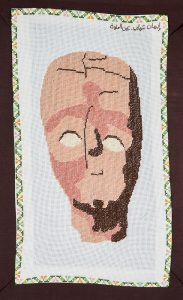
9,500-4,000 BCE Neolithic period: the emergence of farming villages
The introduction of agriculture and the establishment of settled farming communities and villages: the The domestication of animals; the invention of pottery; the emergence of religious beliefs and cultic practices as represented in various figurines and tools. Jericho was developed as one of the earliest fortified settlements in the world.
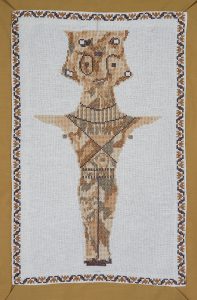
4,000-3,000 BCE Stone-Copper Age: the emergence of regional cultures
The development of regional cultures in Palestine based on pastoral life alongside agricultural production; the introduction of copper and richer artistic and cultic traditions.
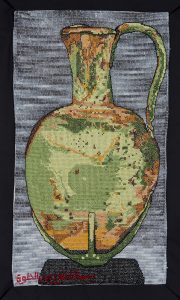
3,000-1,250 BCE Bronze Age: Canaanite city states under the rule of the ancient Egyptian Empire
The emergence of urban life and the establishment of the first fortified cities under Egyptian rule; Canaanites, a group of Semitic people, settled in Palestine/Canaan and along the Syrio-Palestinian coast. They established semi-independent city-states as reflected in Tell al-Amarna Letters; they maintained maritime and land trade with the eastern Mediterranean, Egypt and Mesopotamia; they invented alphabetic writing; they developed a multi-deities religion common to Semitic peoples of the ancient Near East; they manufactured bronze tools; frequent rebellions by Canaanite city states prompted Egyptian military campaigns in Palestine.
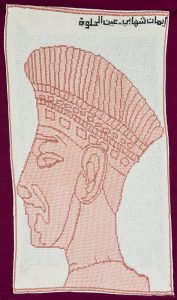
1250-721 BCE Iron Age: regional kingdoms
Massive population migrations led to the establishment of regional kingdoms in Palestine: the Phoenicians (descendants and heirs of the Canaanites) who were seafarers and founded, from their city states along the Syrio-Palestinian coast, maritime colonies along the southern shores of the Mediterranean basin; the Philistines (after whom Palestine was named) migrated from the Mediterranean basin, established a confederation of city states along the southern coast of Palestine, and manufactured iron arms and tools; the Hebrews or Israelites, a semi-nomadic Semitic people, settled in the central mountains of Palestine; they were culturally influenced by the Canaanites, and were in conflict with the Philistines.
 721-332 BCE Mesopotamian Hegemony
721-332 BCE Mesopotamian Hegemony
Palestine was brought under Mesopotamian hegemony; it was conquered in 721 BCE by the Assyrians and in 586 BCE by the Babylonians, who exiled much of the population. During this time, the name Palestine in the form of “Plistu”, deriving from the Philistines, appeared for the first time in Assyrian documents. The Persian emperor Cyrus conquered Palestine and allowed Judeans to return from exile; many of the characteristic ideas and institutions, including the term Jews, emerged during this time; much of the Hebrew Bible was re-written and completed. The name “Palestine”, was mentioned by the 5th century BC Greek historian Herodotus, and appeared later in the Old Testament in the Hebrew form of “Pleshet”, originating from “Pleshteem” (Philistines).
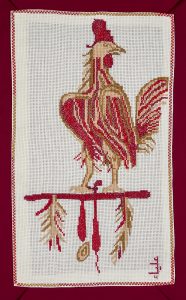 332-63 BCE Hellenistic Period
332-63 BCE Hellenistic Period
Alexander the Great conquered Palestine in 332, bringing it under the influence of Hellenistic culture, which impacted all aspects of life, art and architecture, philosophy and religion. After Alexander’s, death his Middle East Empire was divided between two of his generals: Syria and Palestine under the Seleucides, and Egypt under the Ptolemies; Jews, led by the Maccabees, revolted against the enforced hellenization, and an independent Hasmonean kingdom was established in 129 BCE. The Hasmoneans forcibly converted the Idumeans (early Arabs of southern Palestine) to Judaism.
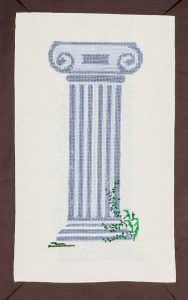
63 BCE-325 CE Roman Period
Following the conquest of Palestine by the Romans in 63 BCE, a process of Romanization began; the establishment of cities, Roman in character such as Jerusalem, Caesarea, Sabatiya, Beisan; A vassal king, Herod the Great (an Idumean Arab by origin) was appointed ruler of Judaea in 37 BCE; During this time the ethnic make of the country included Jews, Samaritans, Idumeans and Nabatean Arabs, Greeks and Phoenicians; the birth of Jesus Christ and the spread of Christianity based on his teachings, and the writing of the New Testament; two major Jewish revolts against the Romans were suppressed, one in 70 CE led to the destruction of the Jewish Temple in Jerusalem; the second, the Bar Kochba revolt in 135 CE, led to the razing of Jerusalem to the ground and building a Roman colony, Aelia Capitolina, in its place.
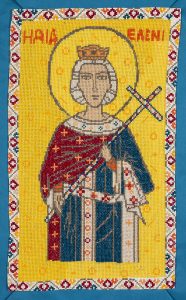
325-640 Byzantine Period
Palestine came under the rule of the Byzantine Empire; Emperor Constantine legitimized Christianity and declared it the official religion of the state. Palestine gradually became Christianized; many churches and monasteries were built over the country at traditional sites associated with the life of Christ, among these, the Church of the Resurrection in Jerusalem and the Church of Nativity in Beth Lehem. An influx of pilgrims visited the holy sites.
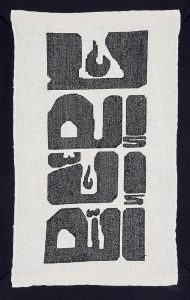
640-1099 Early Islamic Period
Muslim Arabs conquered Palestine from Byzantines and subsequently arabised and islamised the local population. The Umayyads in Damascus (661–750) transformed Jerusalem, which became the third holiest Islamic city, and built the Haram al-Sharif, including the Dome of the Rock and the Aqsa Mosque. They built Ramla as the capital of Palestine. Under the Abbassids in Baghdad (750–969), the Fatimids in Cairo (969–1073), and the Saljuqs in Damascus (1073-1098), Palestine continued to flourish and Jerusalem was a centre for Islamic pilgrimage and learning.
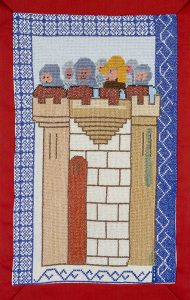
1099-1291 Crusader Period
The Crusaders (Franks) conquered Palestine in 1099, followed by a process of colonization; Jerusalem was sacked and its population massacred; the Latin Kingdom of Jerusalem was established, along with military orders to protect it; the Franks established many cities, rural settlements, castles, churches, monasteries and industrial installations.
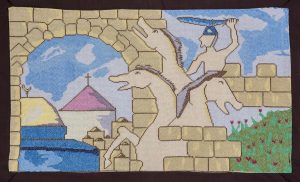
1187-1250 Ayyubid Period
The Ayyubids, following their predecessors the Zangids, waged a ‘holy war’ against the Crusader states in the Levant. After Salah al-Din defeated the Crusaders at the Battle of Hittin in 1187. Salah al-Din recovered Palestine and Jerusalem, restored and consecrated Islamic holy sites in Jerusalem, and revival of Islamic art and architecture. Jerusalem was surrendered to the Crusaders by al-Kamil in a peace treaty in 1229. It was recaptured by the Khawarizmians in 1244.
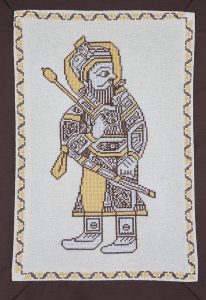
1260-1517 Mamluk Period
The Mamluks, overthrew the Ayyubids and ruled Palestine from Cairo. In 1260 they defeated the Mongols at the decisive battle of ‘Ain Jalut [near Nazareth]. By the time of Baybars’ death in 1277, he had recaptured most of Palestine from the Crusaders. The Mamluks were great patrons of the arts and sponsored a large number of religious and secular buildings, constructed in a distinctive style. They also established an extensive network of khans (caravanserais) and postal stations, linked by a network of roads and bridges. Jerusalem was further confirmed as a centre of Muslim pilgrimage and learning.
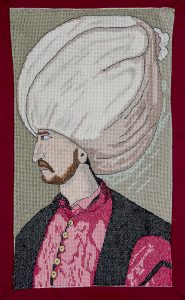
1516-1917 Ottoman Period
The Ottoman Turkish sultan Selim I conquered Palestine in 1516 and incorporated it into the Ottoman Empire. Under Sultan Suleiman the Magnificent an extensive programme of works was carried out, including rebuilding of the walls of Jerusalem and the restoration of the Dome of the Rock and the Aqsa Mosque.
Palestine was divided by the Ottomans into the districts (sanjaks) of Jerusalem, Nablus, and Acre. Heavy taxation and repressive measures by the Ottoman authorities led to several revolts, with local leaders declaring ‘autonomous’ rule, such as Zahir al-‘Umar in northern Palestine with his capital in Acre. In 1801, a French military invasion of Egypt and Palestine led by Napoleon was repelled at Acre by Ahmad Pasha al-Jazzar. Muhammad ‘Ali declared independence in Egypt and occupied Palestine (1831-1840). Jaffa developed into the most important port in Palestine.
The first wave of Jewish immigration to Palestine began in 1881. The aim to establish a Jewish homeland in Palestine was declared by Herzl at the first Zionist congress in Basel in 1897.
In 1916, Britain and France agreed secretly to divide the Arab provinces of the Ottoman Empire between them.
 1917-1920 British Military Administration of Palestine
1917-1920 British Military Administration of Palestine
In 1917 Jerusalem was captured by British forces led by General Allenby. In the same year the British Government declared in the Balfour Declaration, its support for the establishment of a national home for the Jewish people in Palestine.
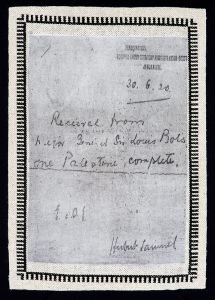 1920-1948 The British Mandate
1920-1948 The British Mandate
Britain was ‘awarded’ the Mandate of Palestine in 1920; increased Jewish immigration and settlement, with British support; the Palestinian Revolt of 1936, which lasted three years, was against British authorities and the increasing Jewish immigration; wave of Jewish terrorism and sabotage against the British; UN Partition Plan in 1947 to divide Palestine into two separate states: Jewish and Arab.
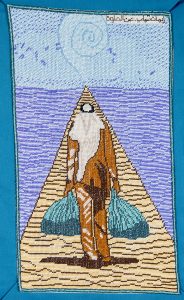
After 1948 The Palestinian Nakba and Diaspora / The State of Israel
The war and the Palestinian Nakba of 1948 led to the ethnic cleansing of Palestinians from their homeland and the establishment of the State of Israel; Nearly one million Palestinian refugees became exiles in neighboring Arab countries; over 500 towns and villages were depopulated and destroyed; Remaining Palestinians came under Israeli military rule; the Absentee Property Act in 1950, under which land belonging to Palestinian refugees became Israel state property; Israel passed the Law of Return, giving every Jew the right to settle in Israel/Palestine; West Bank and Gaza Strip under Jordanian and Egyptian rule, respectively Fateh movement led by Yasser Arafat was founded in 1961; the Palestine Liberation Organization was founded In 1964.
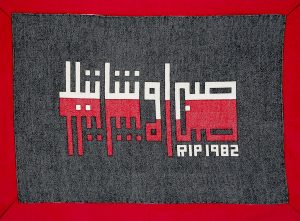 1982 Sabra and Shatila Massacre
1982 Sabra and Shatila Massacre
UN Resolution 242 calls on Israel to withdraw from territories it occupied; al-Karama battle in 1968, where Fatah repelled an Israeli attack; 1973 October War; Camp David Accord signed by Israel, Egypt and the US; Israeli invasion of Lebanon, the siege of Beirut, the expulsion of the PLO from Lebanon and Sabra and Shatila Massacre in 1982.
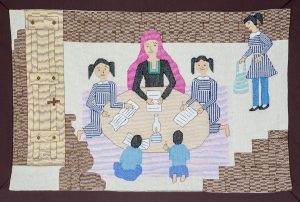
1987-1993 The First Intifada and Oslo Accords
The first Palestinian intifada in 1987 and the establishment of the Unified Leadership of the Intifada; Madrid peace conference 1992; Oslo Accords signed between Israel and PLO in 1993; establishment of the Palestinian National Authority in 1994; continuation of Israeli settlement activities; fragmentation of Palestinian territories.
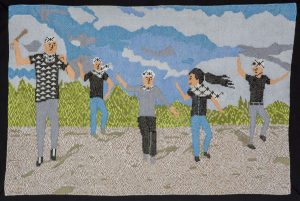
2000–the present: the Second Intifada to the Great March for Return
The outbreak of the Second Intifada and the re-occupation of the Palestinian Territories under Palestinian Authority control in 2002; the Israeli siege of Arafat in Ramallah leading to his death in 2004; the UN recognition of the State of Palestine as non-member state in 2012; the Great March for Return in 2018. The theft of militarily occupied Palestinian land for the use of Jewish Israeli settlers is still ongoing and continuous despite being in violation of international law.